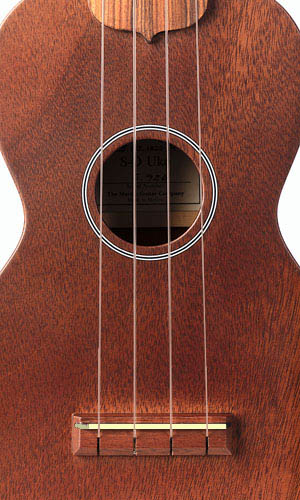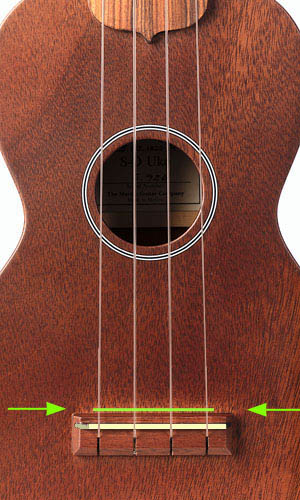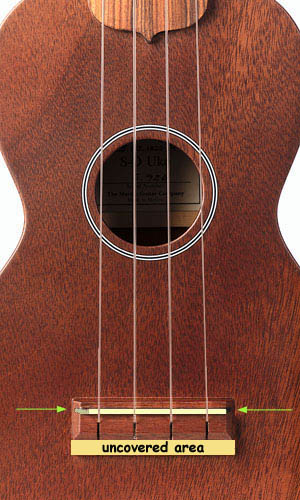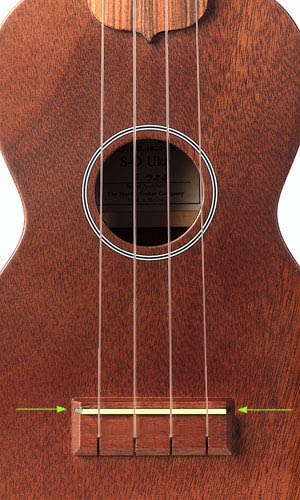
This is the current saddle in the current bridge.
It doesn't play in tune at all.

The green line indicates about where that saddle needs to be in order to make the strings play in tune. Alas, it's just in front of the existing edge of the bridge. So much for keeping the original footprint of the bridge.


This is a somewhat exaggerated image; the replacement bridge didn't look this wide, nor was it enough bigger to encumber or affect the response of the top.

